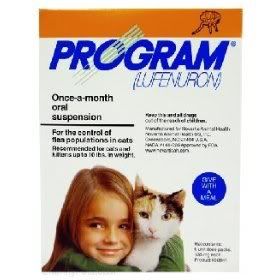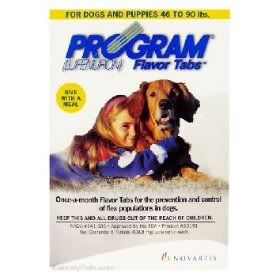 Program Flea Treatment (Lufenuron) is one of the more popular flea control products. Lufenuron dosage is based on your pet’s weight and species.
Program Flea Treatment (Lufenuron) is one of the more popular flea control products. Lufenuron dosage is based on your pet’s weight and species.
It is critical to avoid giving a dog product to a cat and a cat product to a dog. If you haven’t heard about the many issues under investigation by the EPA–part of the problem is thought to be the misuse of products by pet owners by applying flea control products to the wrong species or overdosing due to inaccurate weight estimation. (Best to err on the side of caution.)
The Program flea medication is given once a month.
Lufenuron is administered orally for dogs but cats can receive a pill, liquid suspension, or injection. Program sterilizes the females and so interrupts the flea life cycle.
Eggs cease to hatch within seven days after this product is ingested but adult flea bites can still cause irritation and other complications.
Until the effects take effect, additional flea control methods need to be implemented to reduce the existing flea population.
 Some caution is necessary when using this product but Program is considered one of the better products on the market.
Some caution is necessary when using this product but Program is considered one of the better products on the market.
Program and most of the best home flea remedies and flea control medications are outlined in Flea Control Secrets.

